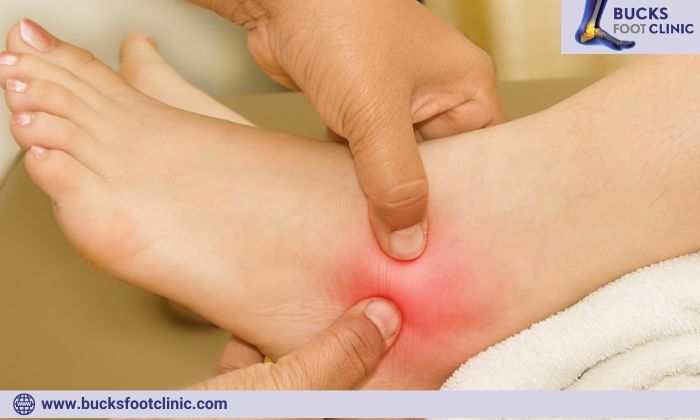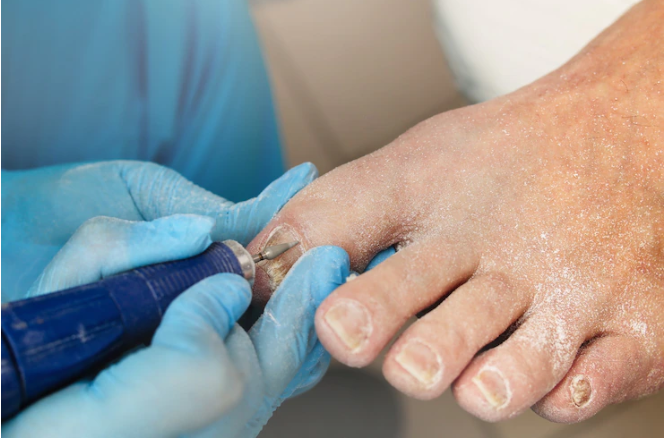
The feet are also like the most rugged part of our body, naturally. Walking, running, etc. can place a lot of stress on the feet and as a result, various types of issues can arise. Foot issues can result from a variety of various kinds of damage and malfunctions, including injuries and inflammation.
One of the most complex parts of the body is the foot, which has 26 bones per foot.
Nevertheless, a person will likely walk 150,000 miles in their lifetime, or about six times around the world. Some of the main causes of foot issues are poor footwear, diabetes, and aging.
One of the most prevalent foot issues, the verruca infection, its causes, and when to seek treatment are highlighted in this article.
What Is Verruca Infection?
Verrucas or verrucae are tiny lesions, rough lumps, warts, or growths that frequently appear on the heels and balls of the foot, which frequently bear pressure.
Verrucas often go away on their own, but if they produce symptoms, they might need to be treated. Most people develop these verrucas at some point in their lives, according to research.
Men are not as significantly impacted as women.Around 4-5% of the population suffers from them, however children and teenagers are more likely to experience them than infants. These warts, which frequently afflict the hands, are more common in certain professions. These include office workers, engineers, butchers, etc.
Is A Verruca Contagious?
The first question that comes to mind when dealing with verruca infection is, “Is a verruca contagious?”.
Since verruca is an infection, it is contagious. Verrucas typically transmit from person to person. Such as sharing public baths where individuals with verrucas have already showered is a common method of dissemination.
Although this illness affects families, it is not hereditary. It affects multiple family members at once and is extremely contagious. If the skin on the foot is injured, cut, or ulcerated in any way, infections are frequently a result. Verruca infection spread might also happen if someone bites their nails, shaves, or suctions their fingers. As a result, the same person’s disease spreads to several bodily parts. There’s also symptoms to look out for in such cases.
Symptoms Of Verruca Infection
Most people dealing with verrucae express pain when walking. Leg or back pain may result from altered walking posture brought on by pain from verrucae in the pressure points of the feet.
- The sole of your foot appears to have a flat, white growth called a verruca.
- There may be one or more little black specks under the skin in the centre of the verruca.
- A verruca may appear by itself or in a group of other verrucas (mosaic warts).
Verrucas largely don’t have a lot of symptoms but they can cause sharp pain when you put weight on the affected area of your foot.
What are the Verruca Treatments?
Although verruca treatment isn;t necessary most of the time as it usually disappears on its own, it could take some time. Speak to a pharmacist if a verruca infection is causing you concern. They can provide you with verruca treatment advice and over-the-counter treatment recommendations.
Consult your General Podiatrist if over-the-counter medicine is ineffective in treating your verruca. Additionally, you ought to visit your General Podiatrist If your verruca is causing you severe anguish or pain, bleeding, spreading or expanding
It is highly recommended to visit your podiatrist if you’ve got conditions like diabetes. In such cases medical treatment is advised to avoid any kind of complications. Your podiatrist will inspect your verruca and look for more verrucae on your feet. They may advise a verruca removal procedure or send you for additional care, such as cryotherapy.
But in ordinary cases, to stop the infection from spreading, follow these instructions if you have a verruca on your foot:
- Try not to touch, pick at, or scrape your verruca.
- When swimming, cover your verruca with a waterproof plaster or a verruca sock.
- When utilizing the locker rooms and shared showers, wear flip-flops.
- Wear only your own socks and shoes.
What Complications Can Verruca Infection Cause?
Pain, subsequent bacterial infections, scarring, are the other common complications.The verrucae may have psychological effects, particularly in children, but that is still quite rare and it can be helped. Other than these few complications, they’re quite harmless in most cases. So much that that don’t even require any serious form of treatment, they basically just disappear for a majority.
Conclusion
Even though the verruca infection is usually easy to deal with, a visit to a professional still has its perks. If you’re looking to learn more about verruca treatment and other general podiatry information, Bucksfoot Clinic has the perfect team of professionals for you. Visit our website to know more.



Recent Comments